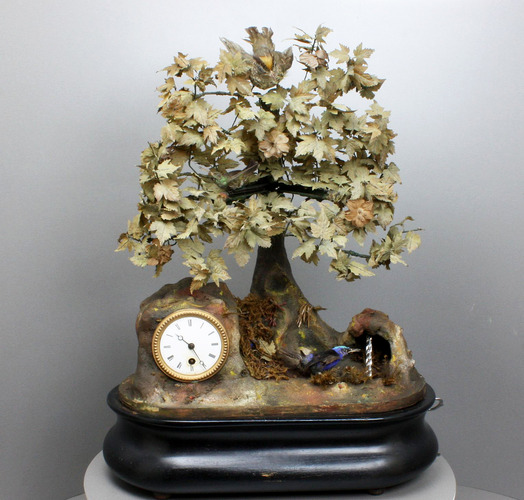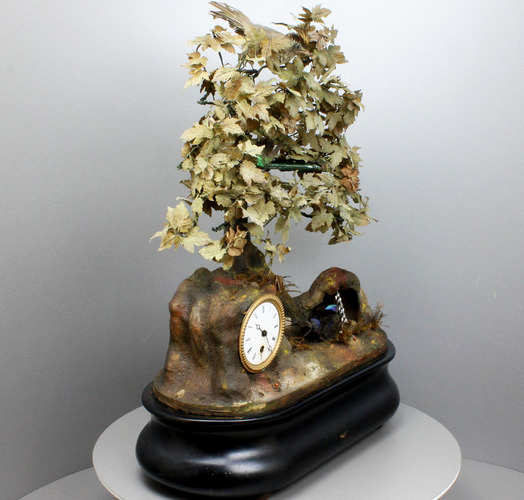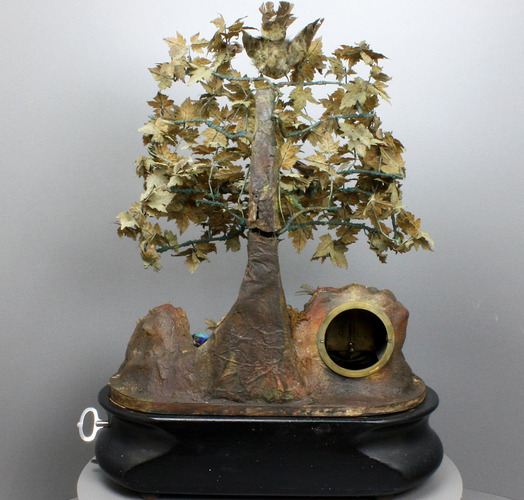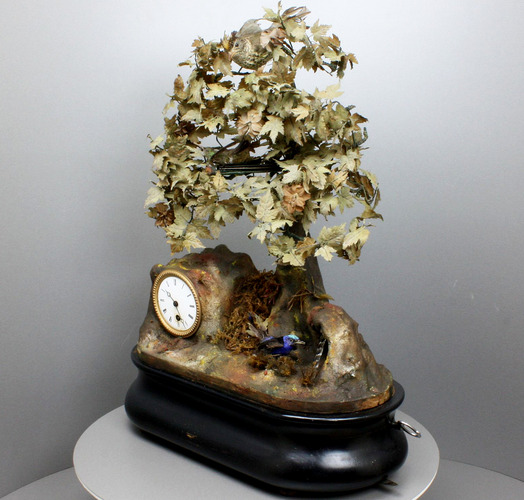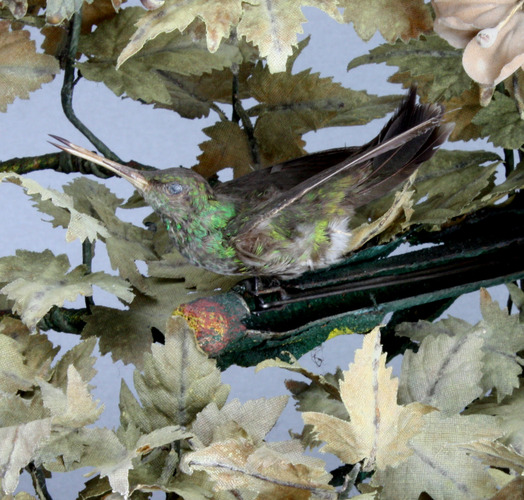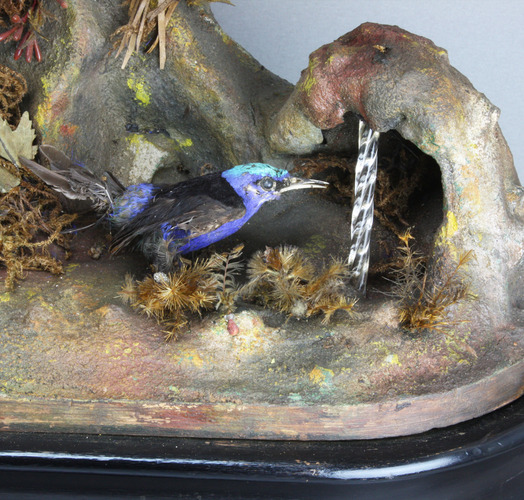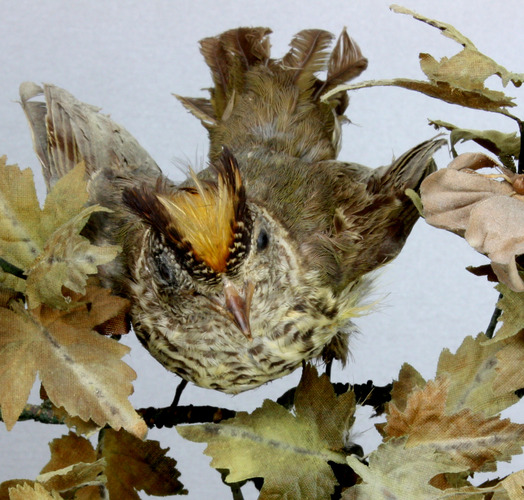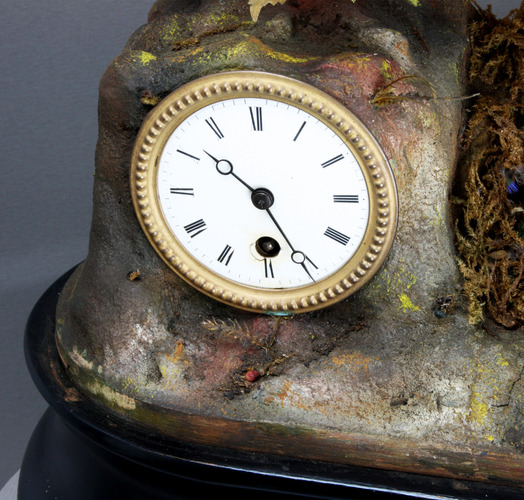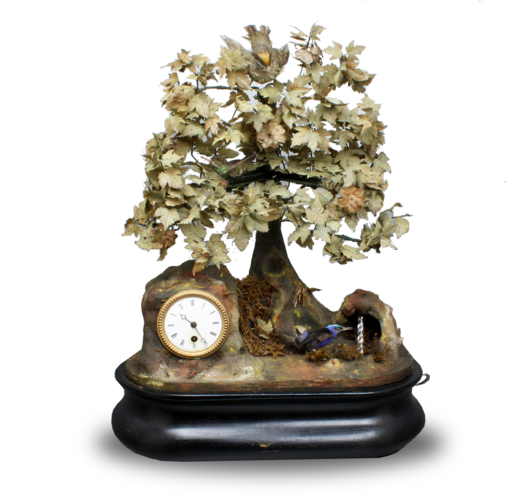
Antique chirping bird-jumper automaton timepiece, by Phalibois
A mesmerising antique chirping bird-jumper automaton timepiece, by Phalibois
French
circa 1885
Variation of the Model 598 from the Jean Phalibois catalogue,
Jump for joy,
When both the automaton key-wind motor and the pull-string wind for cylinder musical tabatáire movement being wound and set off, the performance begins immediately with the central miniature hummingbird flying between the two large branches of the leaf adorned tree, moving its whole body from side to side and wings posed for the regular flights. It is watched over by the grey and black speckled finch perched above, whilst the second animated bird drinks by a creek's edge the fresh water cascading down from the rocks above.
The timepiece movement with fixed pendulum, single-train drive with three pillar circular plates, white enamel dial with black Roman numerals and open dot chapter ring.
Musical movement playing two airs, actuated with controls to the side.
Tree of painted papier-mâché on metal frame with numerous branches each with many leaves and flowers in pressed silk and material. The glass rod waterfall providing a trompe d'oeil ( rather like a barber's pole) and clock housing in further beautifully painted papier-mâché with textured finish, dried flower stems and heather sprigs finishing the visual masterpiece.
Movements within the ebonised oval base, start/stop, change/repeat and winding hoops to right-hand side.
Size - 17.1/2in. wide, 8in. deep, 24in. high - (44.5 x 20.5 x 61cm)
Point of interest -
The use of glass rods for water animation is a very clever method of recreating a moment of life as a key feature for automatons. Twisted in profile and when viewed statically, the appearance is good, with bands of reflected light seen as small droplets from top to bottom. Once set in motion and moving, these 'droplets' are falling down and dependant on the speed, the water is either a trickling stream or a raging torrent.
The masterpiece of this Phalibois mechanism is the flying bird in the centre. Just two rod cams make this bird turn several times before flying to the other branch and back again. To those who have not seen such a feat, you are in for a wonderful surprise.
Captured in print within the 1885-7 catalogue, Model 598 was either made with the clock to the left or to the right, with either a drinking bird or a swimming swan. Very rare to find in untouched and fully working condition, this piece will mesmerise your audience with style and grace with a strong undertone of fun.
See Automata - The Golden Age 1848-1914, C. Bailly, pp.162-3.
| STOCK No | 1460 |
| AVAILABILITY | Sold |
| PRICE | Sold |


